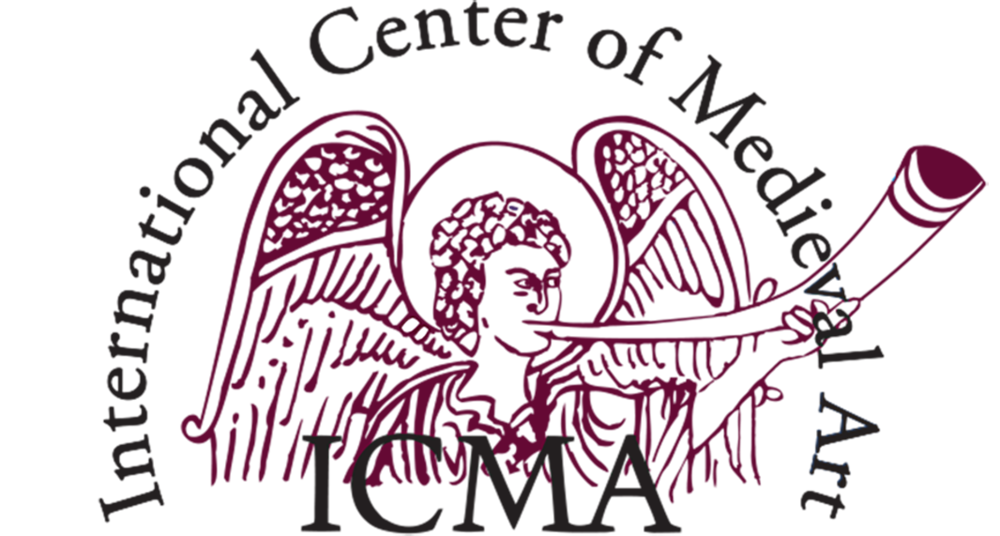Building on the past success of EMICS events, this, the 21st conference of this research series, considers the possible visual and conceptual approaches to Texture in the Medieval World in its widest possible contexts, through examining written, archaeological, pictorial, architectural, geographical, cartographical and liturgical material in order to shed new light on the uses, understanding, purposes, and transformations of texture in the Middle Ages. The interdisciplinary, two-day conference focuses on the visual, conceptual and haptic qualities of textual and visual material and their importance and use in the medieval world. In order to explore the relationship between text, texture and materiality papers will explore ideas of; decoration, colour or luxurious materials; manipulation of texture and materiality through skeuomorphism and symbolism or as exegetical devices; the role of texture and materiality in conveying status, wealth and power in textual, social and material contexts and physicality, presence and scale whether actual, imagined or implied.
Themes will include: craft, technique and process; finished/unfinished; fragments; fraying; fabric; threads; woven, interwoven; embroidered and embellished; edges and borders; webs; networks and exchanges; thus lending itself as a topic to multiple interpretations across various media. This conference (re)considers various facets of textural constructions and understandings in the medieval past, as viewed from the present, seeking an interdisciplinary approach to this topic - including ideas of how texture and depictions of it change over time, and the significance of these changes to the construction of past structures and narratives. By reaching across boundaries of discipline and period, this conference provides a forum for the sharing of ideas, and the exploration of new thoughts on texture. The conference crosses various disciplines and periods, bringing together emerging scholars working across several fields of research with established academics, to provide a platform for the reconsideration of the idea of “texture” in its widest possible connotations.
See here for Texture in the Medieval World Programme (MS Word , 1,050kb).
Registration to attend the above conference is required. See here for the booking information and here for more information
Location: K/133, King's Manor, Exhibition Square, York, YO1 7EP
Email: texturesconference24@gmail.com
Programme
SATURDAY 1 JUNE 2024
9.00-9.30. Registration and Coffee, The King’s Manor, Room K/G33
9.30-9.45 Welcome and opening remarks
9.45-10.45 Session 1: The Elementary and the Sensory. Chair: Meg Boulton
Jessica Gasson, ‘A fountain of living water that springs from Lebanon’, weaving water and other technical challenges in the facture of the Living Water tapestry, 1485
Adriana de Miranda, Texture Decoration in Water Installations (Zoom presentation)
10.45-11.15 Coffee Break
11.15-12.45 Session 2. Dressing the Ecclesiast. Chair: Tracey Davison
Maria Giorgi, The extraordinary vestment of San Panfilo (Zoom presentation)
Juliette Calvarin, Embroidering Velvet: Textile Mimesis on a Fifteenth-Century Chasuble
Flavia Galli Tatsch, Transmedia, transculturality and Texture of Islamic fabrics in 12th century French sculptures (Zoom presentation)
12.45-2.00 Lunch Break
2.00-3.30 Session 3. Painting Textile. Chair: Jeremy Melius
Chiara Stombellini, From Transmateriality to Mise en abyme: Artistic Representation of ‘Panni Tartarici’ in Fourteenth-Century Venice
Chiara Demaria, A guide to ‘contraffare’ textures: Cennini’s Libro dell’Arte and 14th-century Tuscan painting (Zoom presentation)
Rebekkah Hart, Salome and the semiotics of coral, blood, and paint
3.30-5.00 Session 4. Early Medieval Textures. Chair: Hanna Vorholt
Tracey Davison, The silk scarves of York and Lincoln as signifiers of considered projections of the self
Francesca Pandimiglio, The Brocade of the Lombards
Maren Clegg-Hyer, Texture, Materiality, and Missionary Work (Zoom Presentation)
5.00-5.30 Tea Break
5.30-6.45 KEYNOTE LECTURE. Chair: Tracey Davison
Rachel Moss, ‘More potent than all its gold’: Reliquaries and their textures through time
6.45-7.30 Reception
8.00-10.30 Conference Dinner: Jaipur Spice
SUNDAY 2 JUNE 2024
9.30-11.00 Session 5. Concealing and Revealing. Chair: Meg Boulton
Freya Gowrley, Fragmentary Forms: A Longue Durée Approach to Medieval Collage, Proposal for Texture in the Medieval World
Erminia Lucarelli, Depicted and real textiles as vehicles for multi-sensory experiences in sacred spaces: a Florentine case-study (Zoom presentation)
Charlotte Ross, Don’t Judge a Book by its Cover: The Curious Gilt Leather Binding of MS Ashmole 46
11.00-11.30 Tea Break
11.30-1.00 Session 6. Money Counts. Chair: Jane Hawkes
Veronika Pichanicova, Polished to the god(s). gems, metals and light in the religious objects of the middle ages
Jamie Meade, The Fabric of Empire: Byzantine Imperial Clothing as a Marker for Political and Cultural Change
Anna-Maria Minutilli, Unresolved plots: the case study of Saint Theodor’s hexamitos in Brindisi (Zoom presentation)
1.00-2.00 Lunch Break
2.00-3.00 Session 7. Texture and Sensation. Chair: Megan Henvey
Ahmad Yengimolki, Light’s Crucial Role: Illuminating Texture in Islamic and Christian Architecture in Isfahan
Alex Makin, Embroidery, Texture and Sensory Meaning in early medieval England
3.00-3.30 Tea Break
3.30-4.30 Session 8. Words and Music. Chair: Mike Bintley
Jordan K. Skinner, Campanology: Texture and Form
Eric Lacey, The Linguistic Textures of The Seafarer
4.30-6.00 Session 9. Natural Textures. Chair: Jane Hawkes
Stephen Westich, “The Fancy of a Child-Genius”? The Texture and Liminality in Norwegian Stave Churches
Mike Bintley, On the Outside the Yew is an Unsmooth Tree: the Imagined Treescapes of Early Medieval England
Mead Cheek, The Landscape in the Church: the textures of stone sculptures of the Anglo-Saxon Period
6.00 Closing Remarks





















